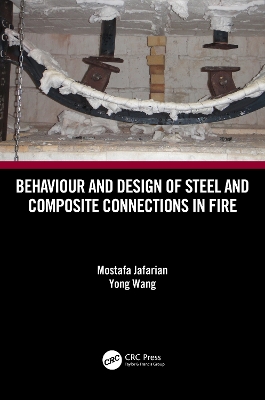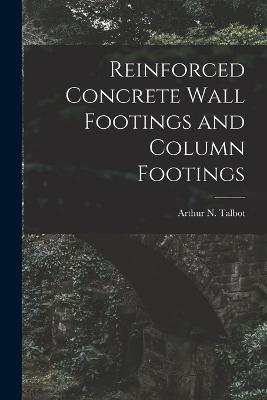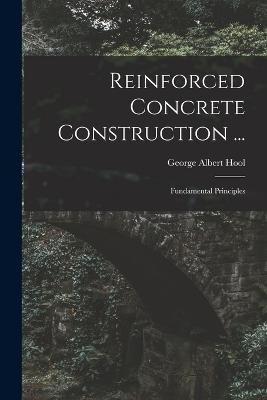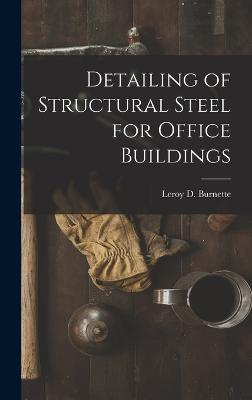Structural Design of Buildings
 portes grátis
portes grátis
Structural Design of Buildings
Holistic Design
Fu, Feng; Richardson, David
Emerald Publishing Limited
07/2024
296
Dura
9781835495612
15 a 20 dias
Descrição não disponível.
Foreword
Preface
Acknowledgements
About the Editors
About the Contributors
Introduction
Chapter 1. Design considerations for typical building uses; Gary Rollison
1.1 Introduction
1.2 Hospitals and medical buildings
1.3 Offices
1.4 Retail and mixed-use
1.5 Industrial buildings
1.6 Industrial - data centres
1.7 Residential
1.8 Schools
1.9 Leisure
1.10 Concluding observations
Chapter 2. Key issues for multi-storey buildings; John Roberts
2.1 Introduction
2.2 Managing the design
2.3 The building structure as a system
2.4 Achieving the right structure on plan
2.5 Achieving the right structural section
2.6 Accommodating other components and issues
2.7 Sustainability and carbon
2.8 Summary
2.9 Concluding remark
Chapter 3. Stability; Saeed Ziaie
3.1 Introduction
3.2 General considerations and philosophy
3.3 Low-rise buildings
3.4 Multi-storey buildings
3.5 Precast concrete framed buildings
3.6 Detailing
3.7 Stability of existing buildings
3.8 Further stability requirements
3.9 Conclusions
Chapter 4. Tall building design; Feng Fu
4.1 Introduction
4.2. The structural system of tall buildings
4.3 Floor system
4.4 Foundation Design for tall buildings
4.5 Shortening effect
4.6 Blast design for tall buildings
4.7 Fire safety design for tall buildings
4.8. Progressive collapse
Chapter 5. Soil-structure interaction; Mohsen Vaziri
5.1 Introduction to soil- structure interaction
5.2 Methods of predicting foundation and substructure behaviour
5.3 Applications and limitations of soil-structure models
5.4 Ground model
5.5 Structural model
5.6 Developing the model with the design team
5.7 Validating results
5.8 Calibrating the model
5.9 Monitoring
5.10 Conclusions
Chapter 6. Movement and tolerances; Alex Hu
6.1 Introduction
6.2 Tolerances
6.3 Material behaviour and movement under applied load
6.4 In-service performance of commonly used structural materials
6.5 Foundation movement
6.6 Strategies for dealing with movement and tolerance effects
6.7 Methods of measurement and control
6.8 Dispute resolution
6.9 Conclusions
Chapter 7. Modular construction in buildings; R Mark Lawson
7.1 Introduction to modular construction
7.2 Structural design in modular construction
7.3 Structural action of modules and background tests
7.4 Factory production of modules
Chapter 8. Structural fire engineering design; Tom Lennon
8.1 Introduction
8.2 Compartment time-temperature response
8.3 Heat transfer
8.4 Mechanical (Structural) response
8.5 Calculation methods
8.6 Concluding remarks
Chapter 9. Structural robustness; Tony Marsh
9.1 Introduction
9.2 Disproportionate and progressive collapse
9.3 Historical development of design for structural robustness
9.4 UK/European regulations and codes of practice
9.5 Methods for design for structural robustness
9.6 Terrorism and other malicious risks
9.7 Why buildings fail
9.8 Concrete failure
9.9 Timber failure
9.10 Masonry failure
9.11 Foundation failure
9.12 Design
9.13 Analysis
9.14 Conclusions
Chapter 10. Seismic design for buildings; Alex Hu
10.1 Introduction
10.2 Engineering fundamentals of earthquake and seismic design
10.3 Seismic design of steel building structures
10.4 Seismic design of reinforced concrete building structures
10.5 Seismic design of reinforced masonry building structures
10.6 Seismic design of wood building structures
10.7 Seismic design of building foundations
10.8 Seismic design of non-structural components of buildings
10.9 Performance based seismic design of buildings
10.10 Conclusions
Preface
Acknowledgements
About the Editors
About the Contributors
Introduction
Chapter 1. Design considerations for typical building uses; Gary Rollison
1.1 Introduction
1.2 Hospitals and medical buildings
1.3 Offices
1.4 Retail and mixed-use
1.5 Industrial buildings
1.6 Industrial - data centres
1.7 Residential
1.8 Schools
1.9 Leisure
1.10 Concluding observations
Chapter 2. Key issues for multi-storey buildings; John Roberts
2.1 Introduction
2.2 Managing the design
2.3 The building structure as a system
2.4 Achieving the right structure on plan
2.5 Achieving the right structural section
2.6 Accommodating other components and issues
2.7 Sustainability and carbon
2.8 Summary
2.9 Concluding remark
Chapter 3. Stability; Saeed Ziaie
3.1 Introduction
3.2 General considerations and philosophy
3.3 Low-rise buildings
3.4 Multi-storey buildings
3.5 Precast concrete framed buildings
3.6 Detailing
3.7 Stability of existing buildings
3.8 Further stability requirements
3.9 Conclusions
Chapter 4. Tall building design; Feng Fu
4.1 Introduction
4.2. The structural system of tall buildings
4.3 Floor system
4.4 Foundation Design for tall buildings
4.5 Shortening effect
4.6 Blast design for tall buildings
4.7 Fire safety design for tall buildings
4.8. Progressive collapse
Chapter 5. Soil-structure interaction; Mohsen Vaziri
5.1 Introduction to soil- structure interaction
5.2 Methods of predicting foundation and substructure behaviour
5.3 Applications and limitations of soil-structure models
5.4 Ground model
5.5 Structural model
5.6 Developing the model with the design team
5.7 Validating results
5.8 Calibrating the model
5.9 Monitoring
5.10 Conclusions
Chapter 6. Movement and tolerances; Alex Hu
6.1 Introduction
6.2 Tolerances
6.3 Material behaviour and movement under applied load
6.4 In-service performance of commonly used structural materials
6.5 Foundation movement
6.6 Strategies for dealing with movement and tolerance effects
6.7 Methods of measurement and control
6.8 Dispute resolution
6.9 Conclusions
Chapter 7. Modular construction in buildings; R Mark Lawson
7.1 Introduction to modular construction
7.2 Structural design in modular construction
7.3 Structural action of modules and background tests
7.4 Factory production of modules
Chapter 8. Structural fire engineering design; Tom Lennon
8.1 Introduction
8.2 Compartment time-temperature response
8.3 Heat transfer
8.4 Mechanical (Structural) response
8.5 Calculation methods
8.6 Concluding remarks
Chapter 9. Structural robustness; Tony Marsh
9.1 Introduction
9.2 Disproportionate and progressive collapse
9.3 Historical development of design for structural robustness
9.4 UK/European regulations and codes of practice
9.5 Methods for design for structural robustness
9.6 Terrorism and other malicious risks
9.7 Why buildings fail
9.8 Concrete failure
9.9 Timber failure
9.10 Masonry failure
9.11 Foundation failure
9.12 Design
9.13 Analysis
9.14 Conclusions
Chapter 10. Seismic design for buildings; Alex Hu
10.1 Introduction
10.2 Engineering fundamentals of earthquake and seismic design
10.3 Seismic design of steel building structures
10.4 Seismic design of reinforced concrete building structures
10.5 Seismic design of reinforced masonry building structures
10.6 Seismic design of wood building structures
10.7 Seismic design of building foundations
10.8 Seismic design of non-structural components of buildings
10.9 Performance based seismic design of buildings
10.10 Conclusions
Este título pertence ao(s) assunto(s) indicados(s). Para ver outros títulos clique no assunto desejado.
Structures; Structures and Buildings; Struct. Analysis and Structural Design; Project Design (conceptual); Construction Materials; Structural Elements
Foreword
Preface
Acknowledgements
About the Editors
About the Contributors
Introduction
Chapter 1. Design considerations for typical building uses; Gary Rollison
1.1 Introduction
1.2 Hospitals and medical buildings
1.3 Offices
1.4 Retail and mixed-use
1.5 Industrial buildings
1.6 Industrial - data centres
1.7 Residential
1.8 Schools
1.9 Leisure
1.10 Concluding observations
Chapter 2. Key issues for multi-storey buildings; John Roberts
2.1 Introduction
2.2 Managing the design
2.3 The building structure as a system
2.4 Achieving the right structure on plan
2.5 Achieving the right structural section
2.6 Accommodating other components and issues
2.7 Sustainability and carbon
2.8 Summary
2.9 Concluding remark
Chapter 3. Stability; Saeed Ziaie
3.1 Introduction
3.2 General considerations and philosophy
3.3 Low-rise buildings
3.4 Multi-storey buildings
3.5 Precast concrete framed buildings
3.6 Detailing
3.7 Stability of existing buildings
3.8 Further stability requirements
3.9 Conclusions
Chapter 4. Tall building design; Feng Fu
4.1 Introduction
4.2. The structural system of tall buildings
4.3 Floor system
4.4 Foundation Design for tall buildings
4.5 Shortening effect
4.6 Blast design for tall buildings
4.7 Fire safety design for tall buildings
4.8. Progressive collapse
Chapter 5. Soil-structure interaction; Mohsen Vaziri
5.1 Introduction to soil- structure interaction
5.2 Methods of predicting foundation and substructure behaviour
5.3 Applications and limitations of soil-structure models
5.4 Ground model
5.5 Structural model
5.6 Developing the model with the design team
5.7 Validating results
5.8 Calibrating the model
5.9 Monitoring
5.10 Conclusions
Chapter 6. Movement and tolerances; Alex Hu
6.1 Introduction
6.2 Tolerances
6.3 Material behaviour and movement under applied load
6.4 In-service performance of commonly used structural materials
6.5 Foundation movement
6.6 Strategies for dealing with movement and tolerance effects
6.7 Methods of measurement and control
6.8 Dispute resolution
6.9 Conclusions
Chapter 7. Modular construction in buildings; R Mark Lawson
7.1 Introduction to modular construction
7.2 Structural design in modular construction
7.3 Structural action of modules and background tests
7.4 Factory production of modules
Chapter 8. Structural fire engineering design; Tom Lennon
8.1 Introduction
8.2 Compartment time-temperature response
8.3 Heat transfer
8.4 Mechanical (Structural) response
8.5 Calculation methods
8.6 Concluding remarks
Chapter 9. Structural robustness; Tony Marsh
9.1 Introduction
9.2 Disproportionate and progressive collapse
9.3 Historical development of design for structural robustness
9.4 UK/European regulations and codes of practice
9.5 Methods for design for structural robustness
9.6 Terrorism and other malicious risks
9.7 Why buildings fail
9.8 Concrete failure
9.9 Timber failure
9.10 Masonry failure
9.11 Foundation failure
9.12 Design
9.13 Analysis
9.14 Conclusions
Chapter 10. Seismic design for buildings; Alex Hu
10.1 Introduction
10.2 Engineering fundamentals of earthquake and seismic design
10.3 Seismic design of steel building structures
10.4 Seismic design of reinforced concrete building structures
10.5 Seismic design of reinforced masonry building structures
10.6 Seismic design of wood building structures
10.7 Seismic design of building foundations
10.8 Seismic design of non-structural components of buildings
10.9 Performance based seismic design of buildings
10.10 Conclusions
Preface
Acknowledgements
About the Editors
About the Contributors
Introduction
Chapter 1. Design considerations for typical building uses; Gary Rollison
1.1 Introduction
1.2 Hospitals and medical buildings
1.3 Offices
1.4 Retail and mixed-use
1.5 Industrial buildings
1.6 Industrial - data centres
1.7 Residential
1.8 Schools
1.9 Leisure
1.10 Concluding observations
Chapter 2. Key issues for multi-storey buildings; John Roberts
2.1 Introduction
2.2 Managing the design
2.3 The building structure as a system
2.4 Achieving the right structure on plan
2.5 Achieving the right structural section
2.6 Accommodating other components and issues
2.7 Sustainability and carbon
2.8 Summary
2.9 Concluding remark
Chapter 3. Stability; Saeed Ziaie
3.1 Introduction
3.2 General considerations and philosophy
3.3 Low-rise buildings
3.4 Multi-storey buildings
3.5 Precast concrete framed buildings
3.6 Detailing
3.7 Stability of existing buildings
3.8 Further stability requirements
3.9 Conclusions
Chapter 4. Tall building design; Feng Fu
4.1 Introduction
4.2. The structural system of tall buildings
4.3 Floor system
4.4 Foundation Design for tall buildings
4.5 Shortening effect
4.6 Blast design for tall buildings
4.7 Fire safety design for tall buildings
4.8. Progressive collapse
Chapter 5. Soil-structure interaction; Mohsen Vaziri
5.1 Introduction to soil- structure interaction
5.2 Methods of predicting foundation and substructure behaviour
5.3 Applications and limitations of soil-structure models
5.4 Ground model
5.5 Structural model
5.6 Developing the model with the design team
5.7 Validating results
5.8 Calibrating the model
5.9 Monitoring
5.10 Conclusions
Chapter 6. Movement and tolerances; Alex Hu
6.1 Introduction
6.2 Tolerances
6.3 Material behaviour and movement under applied load
6.4 In-service performance of commonly used structural materials
6.5 Foundation movement
6.6 Strategies for dealing with movement and tolerance effects
6.7 Methods of measurement and control
6.8 Dispute resolution
6.9 Conclusions
Chapter 7. Modular construction in buildings; R Mark Lawson
7.1 Introduction to modular construction
7.2 Structural design in modular construction
7.3 Structural action of modules and background tests
7.4 Factory production of modules
Chapter 8. Structural fire engineering design; Tom Lennon
8.1 Introduction
8.2 Compartment time-temperature response
8.3 Heat transfer
8.4 Mechanical (Structural) response
8.5 Calculation methods
8.6 Concluding remarks
Chapter 9. Structural robustness; Tony Marsh
9.1 Introduction
9.2 Disproportionate and progressive collapse
9.3 Historical development of design for structural robustness
9.4 UK/European regulations and codes of practice
9.5 Methods for design for structural robustness
9.6 Terrorism and other malicious risks
9.7 Why buildings fail
9.8 Concrete failure
9.9 Timber failure
9.10 Masonry failure
9.11 Foundation failure
9.12 Design
9.13 Analysis
9.14 Conclusions
Chapter 10. Seismic design for buildings; Alex Hu
10.1 Introduction
10.2 Engineering fundamentals of earthquake and seismic design
10.3 Seismic design of steel building structures
10.4 Seismic design of reinforced concrete building structures
10.5 Seismic design of reinforced masonry building structures
10.6 Seismic design of wood building structures
10.7 Seismic design of building foundations
10.8 Seismic design of non-structural components of buildings
10.9 Performance based seismic design of buildings
10.10 Conclusions
Este título pertence ao(s) assunto(s) indicados(s). Para ver outros títulos clique no assunto desejado.







